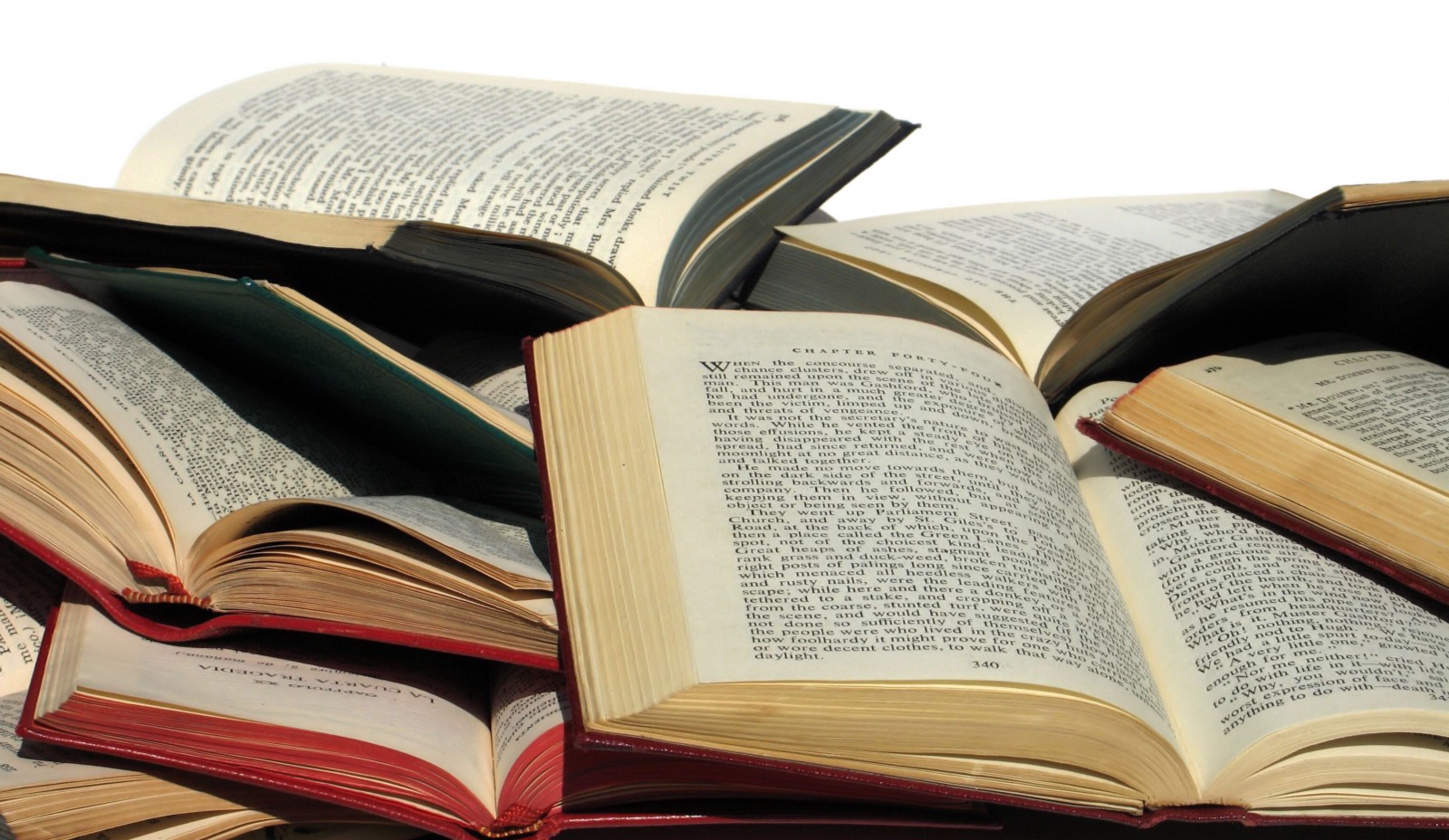
UMORISMO E SALUTE – BIBLIOGRAFIA
UMORISMO E SALUTE – BIBLIOGRAFIA
- Abel, M. H. (1998). Interaction of humor and gender in moderating relationships between stress and outcomes. In Journal of Psychology, 132, 267-276.
- Abel, M. H (2002). Humor, stress, and coping strategies. In Humor, International Journal of Humor Research, 15 (4), 365-381.
- Bartoli, G., Bonaiuto, P. (1997). Psicodinamica e sperimentazione, Carocci Editore, Roma.
- Berlyne, D. E. (1960). Conflict, aurousal and curiosity, McGraw-Hill, New York
- Berlyne, D. E. (1969). Laughter, humor and play, in G. Lindzey & E. Aronson, Handbook of social psychology, vol.3, Addison-Wesley, Massachusetts
- Bergson, H. (1911). Laughter: an essay on the meaning of the comic, Macmillan, New York
- Berk, L. S., Tan, S. A., Nehlsen-Cannarella, S. L., Napier, B., Lewis, J. E., Lee, J. W., & Eby, W. C. (1988). Humor associated laughter decreases cortisol and increases spontaneous lymphocyte blastogenesis. In Clinical Research 36, 435A.
- Berk, L. S., Tan, S. A., Fry, W. A., Napier, B., Lee, J. W., Hubbard ,R. W., Lewis, J. E., & Eby, W. C. (1989). Neuroendocrine and stress hormone changes during mirthful laughter. In American Journal of Medical Sciences, 298 (6) 390-396.
- Bertini, M. (2001). Da Panacea a Igea: verso il delinearsi di un cambiamento di paradigma nel panorama della salute umana. In L’Arco di Giano,
- Bizi, S., Keinan, G., & Beit-Hallahmi, B. (1988). Humor and coping with stress: a test under real-life conditions. In Personality and Individual Differences, 9 (6) 951-956.
- Burt, C. (1945). The psychology of laughter. In Health Education Journal, 3, 101-105.
- Changeux, J. P. (1986). L’uomo neuronale. Milano: Feltrinelli.
- Cousins, N. (1979). The anatomy of an illness, as perceived by the Patient, W. W. Norton
 , New York.
, New York.
- Darwin, C. (1872). The expression of the emotions in man and animals, Murray, London.
- Dearborn, G.V. N. (1900). The nature of the smile and the laugh, in Science, 9, 851-856.
- Dewey J. (1894). The theory of emotion. In Psychological Review, 1, 553-569.
- Dixon, N. F. (1980). Humour: A cognitive alternative to stress? In I.G. Sarason and C.D. Spielberger (eds). In Stress and Anxiety, 7, 281-289. Washington, D C, Hemisphere.
- Eysenck, H.J. (1944-45). National differences in “sense of humour”: three experimental and statistical studies. In Character e Personality, 13, 37-54.
- Flugel, J.C. (1954) Humor and Laughter. In G. Lindzey, Handbook of social psychology, vol.2, Addison-Wesley, Massachusetts.
- Francescato, D. (2001). Ridere è una cosa seria. Mondadori, Milano.
- Freud, S. (1905). Jokes and their relation to the unconscious, Norton
 , New York
, New York
- Freud, S. (1915). Humour, in International journal of Psychoanalysis, 9, 1-6
- Fry, W. F. J. (1969a). Humor in a physiologic vein
 , in New of physiological instrumentation, Beckman Laboratory.
, in New of physiological instrumentation, Beckman Laboratory.
- Goldstein, J.H., McGhee, P.E., (1976). La psicologia dello humour, Franco Angeli, Milano.
- Gregory, J.C. (1924). The nature of laughter, Kegan Paul, London
- Haig, R. A. (1986). Therapeutic uses of humor. In American Journal of Psychotherapy, 40 (4), 543-553.
- Hollingworth, H.L.(1911). Experimental studies in judgment: judgment of the comic. In Psychological Review, 18, 132-156
- Janis, I. (1958). Psychological stress, Wiley, New York
- Johnson, J.H. & Sarason I.G. (1979). Moderator variables in life stress research. In G. Sarason & C. D. Spilberger, Stress and Anxiety, vol.6, Hemisphere, Washington.
- Johnson, J. H., & Sarason, I. G., (1978). Life stress, depression, and anxiety: Internal-external control as a moderator variable. In Journal of Psychosomatic Research, 33, 205-208.
- Johnson, J.H., Sarason I.G., Siegel J.M. (1979). Arousal seeking as a moderator of life stress. In Perceptual and Motor Skills, 49, 665-666.
- Johnson, H. A. (1990). Humor as an innovative method for teaching sensitive topics. Special Issue: Faculty and staff development in geriatric education. In Educational Gerontology, 16(6) 547-559.
- Kamei, T., Kumano. H., Masumura S. (1997). Changes of immunoregulatory celles associated with psychological stress and humor. In Perceptual and Motors Skills, 84, 1296-98.
- Kobosa, S.C. (1979). Stressful life event, personality, and health: an inquiry into hardiness. In Journal Personality and Social Psychology, 37, 1-11.
- Koestler, A. (1964). The Act of Creation, Hutchinson, London.
- Kondo, H. & Morimoto, k. (1996). Effects of mental arithmetic stress on blood cell counts and the immune system. In Environmental Health and Preventive Medicine, 1, 76-79.
- Kuhlman, T. L. (1988). Gallows humor for a scaffold setting: managing aggressive patients on a maximum-security forensic unit. In Hospital & Community Psychiatry, 39 (10) 1085-1090.
- Langevin, R., Day H.I. (1976). I correlati fisiologici dello humour, in J.H. Goldstein, P.E. McGhee. La psicologia dell’humour, Franco Angeli, Milano.
- Lazarus, R.S. (1966). Psychological stress and coping process, McGraw-Hill, New York.
- Lefcourt, H. M., Miller, R.S., Ware, E.E. Sherk, D. (1981). Locus of control ad a modifier of the relationschip between stressors and moods. In Journal of Personality and Social Psychology, 41, 357-369.
- Lefcourt, H. M., Davidson-Katz, K., & Kueneman, K. (1990). Humor and immune system functioning. In Humor, 3 (3) 305-321.
- Lefcourt, H. M., Herbert, M. (2003). Humor as a moderator of life stress in adults. In Schaefer, Charles E. (Ed) Play therapy with adults NY, US: John, New York.
- Martin, L.J. (1905). Psychology of aesthetics: experimental prospecting in the field of the comic. In American Journal of Psychology, 16, 35-116.
- Martin, R. A. & Lefcourt, H. M. (1981). The situational humor response questionnaire: a quantitative measure of the sense of humor, Manuscript submittet for publication.
- Martin, R. A. & Lefcourt, H. M. (1983). Sense of Humor as a Moderator of the relation between stressors and moods. In Journal of Personality and Social Psychology, 45 (6), 1313-1324.
- Martin, R. A. & Dobbin, J. P. (1988). Sense of humor, hassles and immunoglobulin A: Evidence for a stress-moderating effect of humor. In International Journal of Psychiatry in Medicine, 18 (2) 93-105.
- Martineau, W. H. (1967). A model for a theory of the function of humor. In Research Report in the Social Sciences, 1, 51-64
- McComas, H. C. (1923). The origin of laughter. In Psychological Review, 30, 45-55
- McDougall, W. (1922). Why do we laugh?, In Scribners, 71, 359-363
- McNair, D.M., Lorr, M., Droppleman, L.F. (1971). The Profile of Mood States, Calif-Edits, San Diego.
- Medalie, J. H., & Goldbourt, U. (1976). Angina pectoris among 10,000 men: Psychosocial and other risk factors as evidenced by a multivariate analysis of a five year incidence study. In American Journal of Medicine, 60, 910-921.
- Memon, V.K. (1931). A theory of laughter, Allen & Unwin, London.
- Moran, C., Massam, M. (1997). An evaluation of Humour in emergency work, in Australasian Journal of Disaster and Trauma Studies, 3.
- Monro, D.H. (1951). Argument of laughter, Melbourne Univ. Press, Melbourne
- Naliboff, B.D., Benton, D., Solomon, G.F., Morley, J.E., Fahey, J.L., Bloom, E.T., Makinodan, T., Gilmore, S.L. (1991). Immunological changes in young and old adults during brief laboratory stress. In Psychosomatic Medicine, 53, 121-132.
- Nerhardt, G. (1970). Humor and inclination to laugh: Emotional reactions to stimuli of different divergence from a range of expectancy. In Scandinavian Journal of Psychiatry, 2, 185-195.
- Nevo, O., Keinan, G., & Teshimovsky-Arditi, M. (1993). Humor and pain tolerance. In Humor, 6, 71-88.
- Nezu, A. M., Nezu, C. M., & Blissett, S. E. (1988). Sense of Humor as a Moderator of the Relation between stressful events and psychological distress: a prospective analysis. In Journal of Personality and Social Psychology, 54 (3) 520-525.
- Nuckolls, K. B., Cassel, J., & Kaplan, B. H. (1972). Psychosocial assets, life crisis and the prognosis of pregnancy. In American Journal of Epidemiology, 95, 431-441.
- O’Connell, W. E. (1969). Creativity in humor. In Journal of Social Psychology, 78, 237- 241.
- Overholser, J. C. (1992). Sense of humor when coping with life stress. In American Journal of Sociology, 47, 799-804.
- Panish, J.R. (2002). Life satisfaction in the elderly: The role of sexuality, sense of humor, and health. In Dissertation Abstracts International: Section B: The Sciences & Engineering, Vol 63, 5-B, 2598.
- Prerost, F. J. (1989). Theory and practice: Intervening during crises of life transitions: Promoting a sense of humor as a stress moderator. In Counselling Psychology Quarterly, 2 (4) 475-480.
- Rim, Y. (1988). Sense of humor and coping styles. In Personality and Individual Differences, 9 , 559-564.
- Rivera, M. E. (2003). Humor, health, and healing at children’s respite care, inc.:a day-care program for children with chronic and life-threatening illness. In A. Klein, Humor in children’lives: a Guidebook for practioners, Westport 95-109.
- Ruch, W. (1992). Assessment of Appreciation of Humor: Studies with the 3WD Humor Test, in C.D. Spielberg, J.N. Butcher (eds). Advaces in personality Assessment, vol.9, Erlbaum, Hilsdale, 1993.
- Ruch, W., Stevens, J. (1995). The Differential Effects of Nitrous Oxide on Moad Level: The role of Trait-Cheerfulness, in 7th Metting of the International Society for the Study of Individual Differences, Warsaw.
- Sandler, I. N., & Lakey, B. (1982). Locus of control as a stress moderator: The role of control perceptions and social support. In American Journal of Community Psychology, 10, 65-80.
- Schachter S. & Singer J, (1962). Cognitive, social and physiological determinants of emotional state. In Psychological Review, 69, 379-399.
- Schachter, S. & Wheeler, L. (1962). Epinephrine, chlorpromazine and amusement. In Journal of Abnormal and Social Psychology, 65, 121-128.
- Scholl, J. C., Ragan, S. L. (2003). The use of humor in promoting positive provider-pazient interactions in a hospital rehabilitation unit. In Health Communication, 15 (3), 319-330.
- Smith, R. E., Johnson, J. H., & Sarason, I. G. (!978). Life change, the sensation seeking motive, and psychological distress. In Journal of Consulting and Clinical Psychology, 46, 348-349.
- Solano, L. (2001). Tra mente e corpo, Raffaello Cortina Editore, Roma.
- Spencer, H. (1860). The Psychology of laughter, Mcmillan’s Magazine.
- Spencer, H. (1916). On the physiology of laughter. In Essays on education, Everyman’s Libray, London.
- Suls, J. (1976). L’apprezzamento di barzellette e i cartoon in un modello a due fasi: un analisi del processo informazionale. In J.H. Goldstein, P.E. McGhee, La psicologia dell’humour, Franco Angeli, Milano.
- Svebak, S. (1974). Revised questionnaire on the sense of humor. In Scandinvian Journal of Psychology, 12, 328-331.
- Thorson, J. A.& Powell, F. C. (1993). Development and validation of a multidimensional sense of humor scale. In Journal of Clinical Psychologic, 49, 13-23.
- Thorson, J. A. & Powell, F. C., Sarmany-Schuller, I., Hampes, W. P. (1997). Psychological Health and sense of Humor. In Journal of Clinical Psychology, 53 (6), 605-619.
- Turner, R. G. (1980). Self-monitoring and humor production. In Journal of Personality, 48, 163-172.
- Walsh, J.J. (1924). Laughter and health, Appleton, New York.
- Wolff, H. A., Smith C. E & Murray H. A. (1934). The psychology of humor. An study of responces to race-disparagement jokes. In Journal of Abnormal and Social Psychology, 28, 341.
VAI AL CAPITOLO PRECEDENTE
Post Views: 8.253

 , New York.
, New York. , New York
, New York , in New of physiological instrumentation, Beckman Laboratory.
, in New of physiological instrumentation, Beckman Laboratory.

